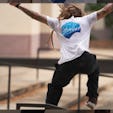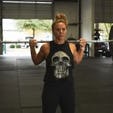Tom Hardy as Bane. Pro wrestling’s Bill Goldberg. Brock freakin’ Lesnar… When you think of the most jacked and brutally Herculean physiques in the world, these are some of the guys who probably come to mind, and the main reason why is a well-developed set of traps. If you have ambitions of competing in a physique contest, or you just want to look like a football lineman, bouncer, or some other tough SOB, building up your traps ought to take priority in your training. We’ve got 4 traps exercises and 2 workouts that will turn your neck and upper back into that of a Brahman bull.
What Are the Trapezius Muscles (Traps)?
(See 00:28 in the video above.)
When weightlifters say “traps,” they’re talking about the trapezius muscles on the upper back. There are two of them, one on each side of the spine, and they consist of three parts—each with a different function.
The upper traps start at the top of the neck and attach to the upper and outer edge of the shoulder blade. This part of the muscle shrugs your shoulder, rotates your shoulder blade upward when you raise your arm above horizontal, and helps turn your head. The middle traps originate in the center of the spine and spread out to the shoulder blade and acromion joint. The mid traps pull your shoulder blades back and together.
The lower traps start out way down at the bottom of the rib cage and stretch up to the shoulder blade. They do the opposite of what the upper traps do, drawing your shoulder blades downward.
Most guys only train their traps with barbell and dumbbell shrugs, but as we just explained, that shrugging motion really only works the upper traps, so shrugging alone is incomplete training when you want an upper back like a bull. To get trapezius muscles that appear three-dimensional and make you look like you’re wearing an oxen’s yoke—hence the term “yoked”—you need to train the traps’ other two functions. And that’s not just a good idea for building a bad ass physique. Strengthening the middle and lower traps will also help to ward off shoulder injuries and keep your upper back in balance with your chest.
Ask any physical therapist who’s dealt with clients complaining of shoulder pain from too much pressing or poor posture—they often prescribe scapular retraction and lower-trap exercises to restore balance. Chronic slouchers often experience scapular winging—excessive outward movement of the shoulder blades—which can lead to poor shoulder mechanics in pressing and reaching overhead. Strengthening the lower and middle trap helps offset that, explains Chad Waterbury, DPT, a physical therapist and strength and conditioning coach in Los Angeles (@drchadwaterbury). “You’ll open space in the shoulder joint and avoid pain and impingement when you reach overhead.”
Finally, from a performance perspective, strong traps play a role in weightlifting cleans and deadlifts. “In sports, they help you throw a punch and swing a racquet,” says Andrew Heffernan, CSCS, an award-winning fitness journalist and co-author of The Exercise Cure and Your New Prime. In short, big traps aren’t just a sign of a guy or gal who can rip sh!t up—they actually help you do it.

Four Effective Exercises for Working Out Your Traps
(See 01:39 in the video.)
Start integrating the following movements into your training. They can be done toward the end of any upper or full-body training days you do, as well as on back days, if you follow a body-part workout split. (See sample workouts below in the Best Trap Workouts For Getting Huge section for examples of how they can fit in.)
1. Dumbbell Shrug With Forward Lean (Upper and Middle Traps)
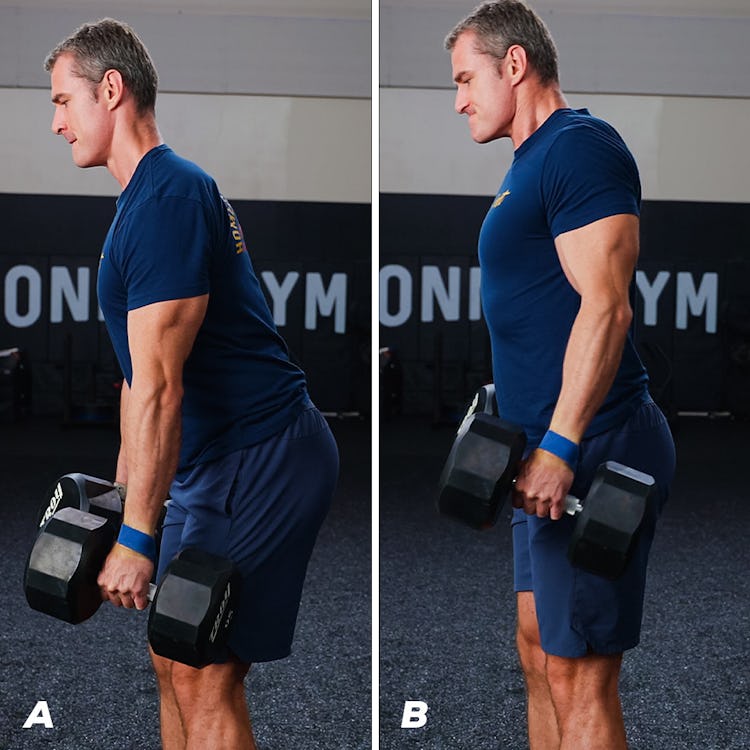
(See 01:44 in the video.)
Most people do shrugs by shrugging their shoulders straight up. That will certainly hit the upper traps, but you’ll involve more of the muscle—specifically, the middle traps, the meatiest part of the muscle—by angling your body forward a bit. It also allows you to use a greater range of motion.
This kind of shrug was a favorite technique of Dorian Yates, a Mr. Olympia-winning bodybuilder with one of the biggest backs in history.
Step 1. Hold dumbbells at your sides and bend your hips back about 20 degrees. Keep a long straight line from your head to your tailbone, and brace your core. You don’t want to round your lower back here. Retract your neck and tuck your chin. Maintain this body position throughout the exercise.
Step 2. Shrug your shoulders up and slightly back. You should feel your whole upper back pinch together. Hold this top position for a second or two to really make the traps work, and then lower the dumbbells back down under control, letting the weight stretch your traps at the bottom of the rep.
As you get stronger, your grip strength will limit the weight you can use, shortchanging your traps of the stimulus. It’s OK to use lifting straps to reinforce your grip so you can shrug heavier weights and challenge your traps even more.
2. Wide-Grip Chest-Supported Row (Middle Traps)
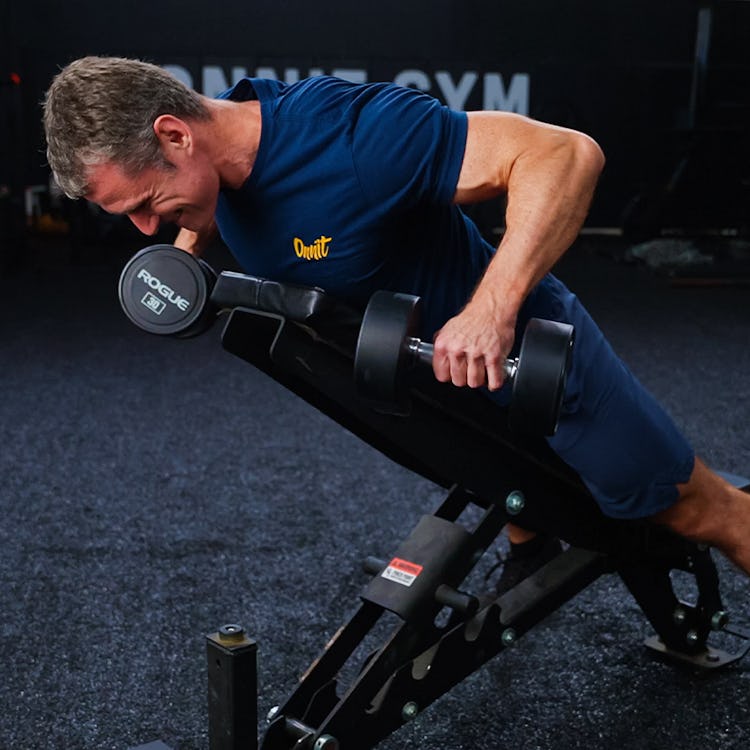
(See 02:44 in the video.)
Any rowing movement that has you squeezing your shoulder blades together will involve a lot of middle traps. But supporting your chest on a bench will provide more stability, which allows you to lift heavier weight, and will better isolate the upper back muscles in general. There’s a time and place for bent-over rowing variations, but if you want to zero-in on the traps, it’s better to take your lower back out of the equation and not waste energy stabilizing the entire body.
You can do these on a machine, with a barbell, or with dumbbells, as shown in the video above.
Step 1. Set a bench to about a 45-degree angle. It just needs to be high enough to accommodate the length of your arms and prevent the weights you’re using from hitting the floor at the bottom of each rep. Lie on the bench, chest down, and grasp dumbbells.
Step 2. Row the weights with your arms out about 60 degrees. This will target the traps better than if your arms are close to your sides, which is more of a lat exercise. Drive your elbows back as far as you can and squeeze your shoulder blades together at the top. You may want to hold the top for a second or two as you did with the shrugs to make the exercise stricter and emphasize the traps as much as possible.
Step 3. Lower the weights and allow your shoulders to spread at the bottom.
As with the shrugs, it may be helpful to use lifting straps on your rows once you’ve worked up to very heavy weights that your grip can’t hold onto.
3. Kelso Shrug (Middle Traps)
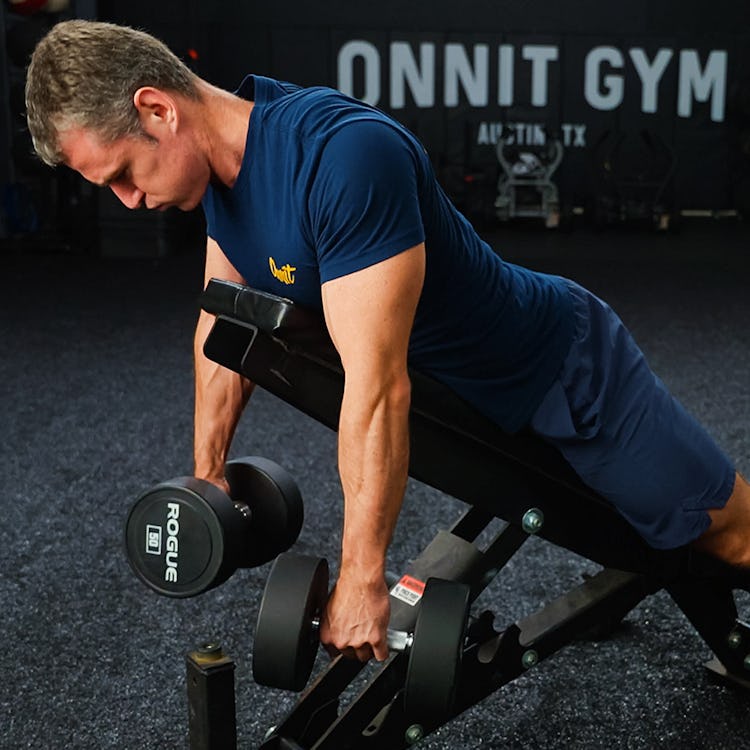
(See 03:59 in the video.)
Here’s a movement that really isolates the traps. The goal here is to prevent the other back muscles, along with the biceps, from assisting, and force your traps to retract your shoulder blades alone. You can do these with a barbell or a machine, but dumbbells work fine too, as long as you use a wide enough grip to allow your shoulders to retract all the way.
Step 1. Set up on a bench the way we described for the chest-supported row.
Step 2. Simply retract your shoulders and squeeze them. Hold the top for a second or two. Be careful not to shrug your shoulders up or hyperextend your back. Just pull the weight straight back. Your chest may come off the pad a little, but don’t arch your back hard trying to get the weight up. It’s a short range of motion and a subtle movement, but the point is to isolate the traps, so don’t turn it into another row.
4. Y Raise (Lower Traps)
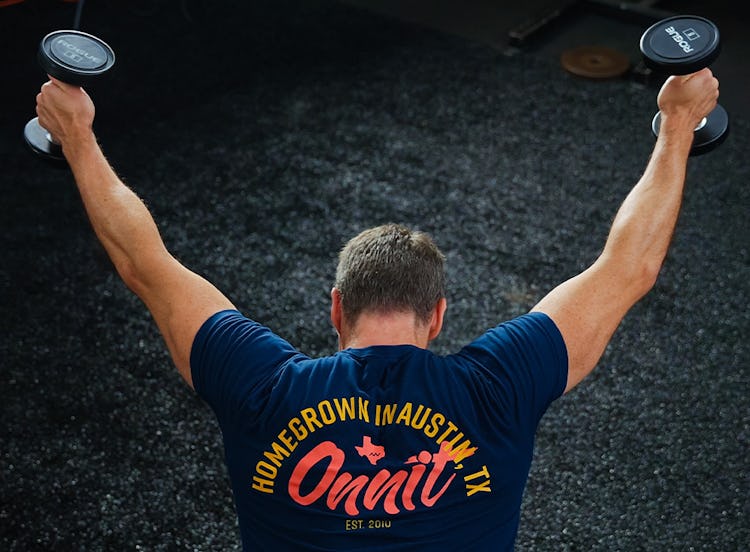
(See 04:41 in the video.)
Remember we said that your lower traps pull the shoulder blades down in a reverse shrugging motion, so any pullup or pulldown variation will involve the lower traps to a large degree while it trains the lats. Still, it’s a good idea to really isolate the lower traps to strengthen them, especially if you do a lot of overhead or chest pressing, which can be hard on the shoulder joints. Strong lower traps help to stabilize shoulders, and the Y raise is a great movement for this purpose.
Step 1. Set a bench to a 45-degree angle and lie on it, chest down. Hold a light dumbbell in each hand, and brace your core.
Step 2. Raise your arms out in front of you on an angle so your body forms a Y shape. Hold the top for a second or two. You should feel the tension in the middle of your back, and if you don’t, make sure you’re not going too heavy or arching your back.
The Best Trap Workouts for Getting Huge

(See 05:30 in the video.)
“The traps work in concert with other muscles—such as the rhomboids and serratus anterior—to perform a myriad of scapular movements,” says Waterbury. Any time you perform rows, chins, pulldowns, overhead presses, or deadlifts, you’re also hitting your traps—especially the upper traps. Because the traps are involved in so many of your other back exercises, you don’t need to blast them with a death ray of volume to see gains.
Try adding one or two trap-focused exercises to your routines for two sessions a week, and do only two hard sets to start. (This means sets taken to failure, or within one rep of failure.) If you feel your traps are really lagging and you want to emphasize them, prioritize them by doing a trap exercise first in your workout. Here are two examples of back workouts that emphasize the trapezius.
Sample Back Workout 1
1. Chinup
Sets: 2 Reps: 5–8
2. Wide-Grip Chest-Supported Row
Sets: 2 Reps: 5–10
3. Close-Grip Cable Row
Sets: 2 Reps: 5–10
4. Dumbbell Shrug
Sets: 2 Reps: 5–10
Sample Back Workout 2
1. Kelso Shrug
Sets: 2 Reps: 5–10
2. One-Arm Dumbbell Row
Sets: 2 Reps: 5–10
3. Lat Pulldown
Sets: 2 Reps: 5–10
4. Y Raise
Sets: 2 Reps: 6–10
How to Stretch Your Traps

(See 06:23 in the video.)
The traps can get tight from a lot of heavy training in combination with sitting in front of a computer or looking down at your phone all day, so it’s helpful to stretch them out a little bit throughout the day and after training. This stretch from Waterbury may help to prevent headaches as well as injury in the gym.
Step 1. Reach your right hand behind your back and place the back of your hand against the back of your left hip. Hold your shoulders down and back.
Step 2. Grasp the back of your head and gently pull it down and across in the direction of your left shoulder. You’ll feel a strong stretch in the back of your neck and traps. Hold for 30 seconds, and then repeat on the opposite side. Repeat for 3 rounds.
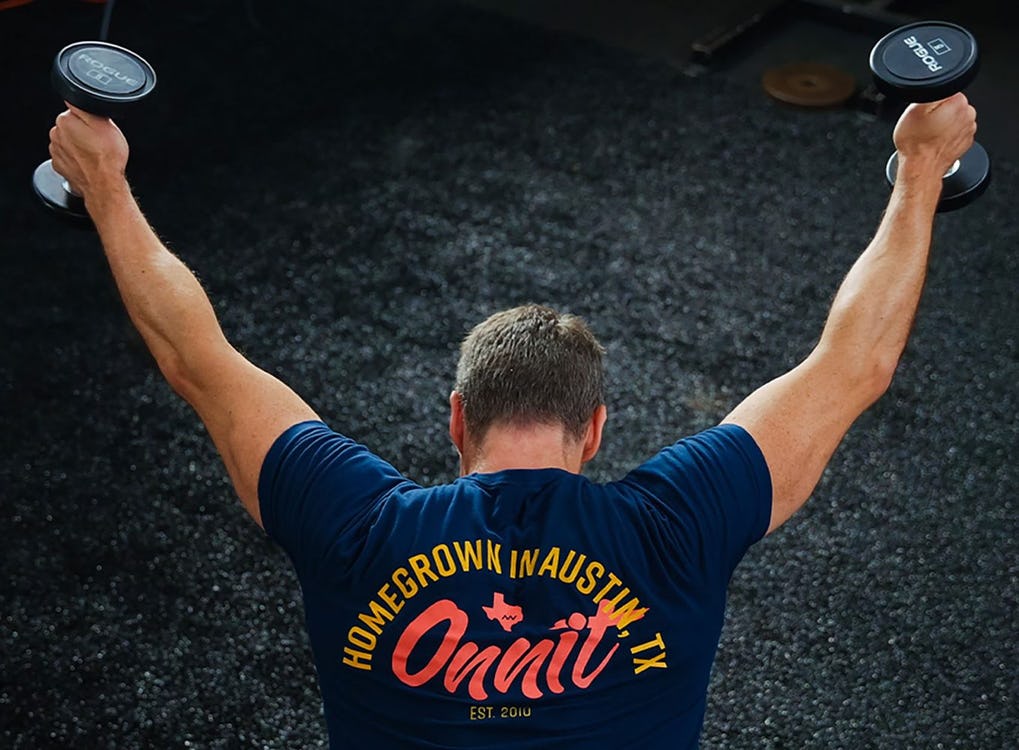
)
